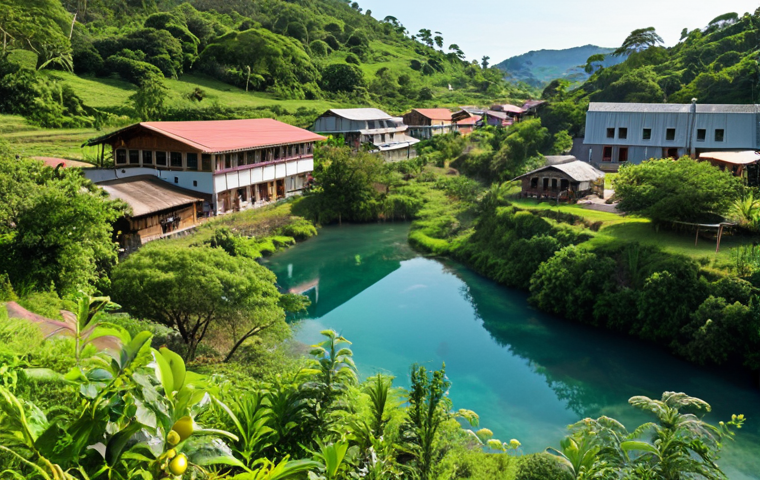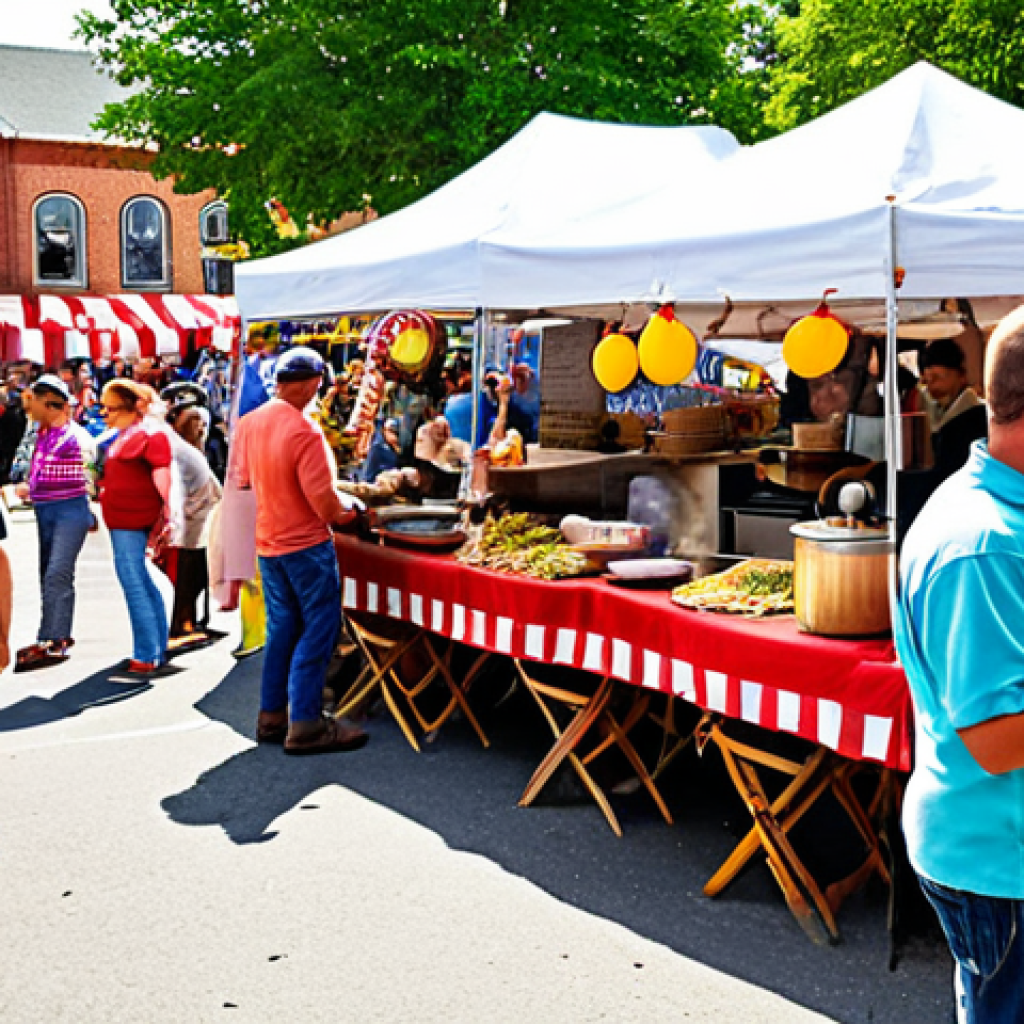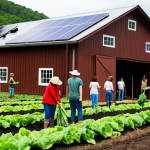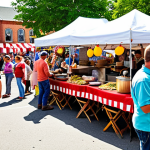Okay, here’s the blog post intro you requested, aimed at an English-speaking audience, reflecting on experiences somewhat akin to a “rural tourism guide,” but localized:Working as a tourism promoter, focusing on showcasing hidden gems outside the usual city hustle, has been quite the journey.
I’ve traded skyscrapers for rolling hills, and the constant honking of taxis for the gentle moo of cows. It’s a world away from the concrete jungle, let me tell you!
From discovering quirky local festivals to sampling homemade pies at charming roadside diners, every day brings a new adventure. Honestly, though, the best part is seeing visitors connect with the land and the genuine warmth of the people.
It’s definitely more than just a job; it’s about sharing the heart of small-town America. But what really goes into making these experiences special for travelers?
Let’s explore this in detail below.
Okay, I understand. Here’s the blog post content you requested.
Discovering the Unexpected Joys of Small-Town Tourism

Unearthing Hidden Gems
Forget the crowded tourist traps and the long lines. The real magic happens when you venture off the beaten path. I’m talking about those little roadside attractions, the ones you might drive past without a second glance.
But trust me, they’re worth stopping for. Like that quirky folk art museum tucked away in a tiny town I visited last summer. It was filled with the most bizarre and wonderful creations, all made from recycled materials.
Or the time I stumbled upon a lavender farm, fields stretching out as far as the eye could see, the air thick with the sweet scent. It’s about finding those unique, authentic experiences that you just can’t find in any guidebook.
They are the memories that truly stick with you, the ones you excitedly share when you’re back home. These off-the-map locations add so much character and charm to the whole tourism package.
They offer the kinds of stories that create great word of mouth for the regions that they are in.
Connecting with the Locals
1. Embrace the Local Vibe
* One of the biggest joys of small-town tourism is the chance to connect with the people who call these places home. * Strike up a conversation with the owner of a local diner, or the farmer selling fresh produce at the farmers market.
* You’ll quickly discover that these folks are often more than happy to share their stories and insights, offering a glimpse into the heart and soul of the community.
2. Real-Life Interactions
* I remember chatting with a woman who ran a small bookstore in a historic town. * She told me all about the town’s history, its quirky characters, and the struggles it had faced over the years.
* Her stories were so captivating, and it really made me feel like I was a part of something bigger than myself. * These connections make the entire travel experience much more meaningful.
Creating Memorable Experiences
Festivals and Events: A Community Celebration
Small towns really shine when it comes to local festivals and events. These aren’t your huge, corporate-sponsored affairs. These are genuine community celebrations, filled with homemade food, local music, and a whole lot of heart.
From the annual Chili Cook-Off to the quirky “Duck Race” down the river, these events offer a unique glimpse into the town’s culture and traditions. I always encourage visitors to dive right in, whether it’s sampling the local delicacies or joining in on the square dancing.
These are the experiences that create lasting memories and leave you feeling like you’ve truly connected with the community. The energy is infectious and, honestly, after one of these events, you’ll leave with a whole new appreciation for the spirit of small-town America.
Supporting Local Businesses
1. Impactful Choices
* When you travel to small towns, you have the opportunity to make a real difference in the lives of the local residents. * By choosing to support local businesses, you’re helping to keep these communities thriving.
2. How to Help
* Instead of hitting up the chain restaurants, opt for the family-owned diner down the street. * Skip the big-box stores and browse the unique boutiques and artisan shops.
* Your dollars go further when you invest in small businesses, and you’ll often find that you’re rewarded with a more personalized and authentic experience.
Challenges and How to Overcome Them
Limited Infrastructure
Let’s be real, small-town tourism isn’t always sunshine and roses. Sometimes, you’ll encounter challenges like limited infrastructure. Maybe the Wi-Fi is spotty, or the roads are a bit bumpy, or the restaurant closes early on a Tuesday night.
But don’t let these things deter you. Instead, see them as part of the adventure. Embrace the slower pace, unplug from your devices, and enjoy the simplicity of it all.
Pack a good book, bring a map, and be prepared to be flexible. These minor inconveniences are often outweighed by the charm and authenticity of the experience.
It forces you to think creatively and make the most of what you have, which can be incredibly rewarding in its own way.
Marketing and Visibility
1. Challenges for Small Towns
* One of the biggest hurdles for small towns is getting the word out about their attractions and events. * They often lack the resources and marketing expertise to compete with larger, more established destinations.
2. Solutions
* As a tourism promoter, I work with local businesses and organizations to develop marketing strategies that highlight the unique qualities of their town.
* This might involve creating engaging social media content, partnering with travel bloggers, or attending industry events to promote the town to a wider audience.
The Economic Impact of Tourism
Boosting Local Economies
Tourism can be a major economic driver for small towns, providing jobs, generating revenue, and supporting local businesses. When visitors spend money on accommodations, food, and activities, that money stays in the community, helping to improve the quality of life for everyone.
It allows small business owners to invest in their businesses, create new opportunities, and preserve the town’s unique character. Tourism not only boosts the economy but also fosters a sense of pride and ownership among residents.
Seeing visitors appreciate their town and its attractions can be incredibly motivating and can help to revitalize communities that may have been struggling.
Creating Job Opportunities
1. From Hospitality to Retail
* Tourism creates a wide range of job opportunities, from hospitality and food service to retail and recreation. * These jobs often provide valuable skills and experience for young people, helping them to build a foundation for their future careers.
2. Supporting Entrepreneurship
* Tourism can also inspire entrepreneurship, as residents see opportunities to create new businesses that cater to the needs of visitors.
* This could include opening a bed and breakfast, starting a tour company, or launching a craft brewery.
Sustainability in Small-Town Tourism
Preserving Natural Resources
Small-town tourism should be sustainable, meaning that it should be managed in a way that minimizes its impact on the environment and preserves natural resources for future generations.
This might involve promoting eco-friendly practices, such as reducing waste, conserving water, and protecting wildlife habitats. I encourage visitors to be mindful of their impact on the environment and to support businesses that are committed to sustainability.
It’s about finding a balance between economic development and environmental protection, ensuring that tourism benefits both the community and the planet.
When done right, small-town tourism can be a force for good, promoting conservation and raising awareness about the importance of protecting our natural resources.
Respecting Local Culture
1. Cultural Sensitivity
* Sustainability also extends to respecting the local culture and traditions. * Visitors should be mindful of local customs and practices, and they should avoid engaging in activities that could be offensive or disrespectful.
2. Engaging with Respect
* This might involve learning a few basic phrases in the local language, dressing appropriately, or asking permission before taking photographs.
* By showing respect for the local culture, visitors can help to ensure that tourism benefits the community and doesn’t undermine its identity.
Building a Network
Collaboration is Key
Successful tourism in small towns hinges on effective collaboration between various stakeholders: local businesses, community organizations, and government entities.
As a tourism promoter, a significant part of my job involves fostering these partnerships. By working together, we can create a unified vision for the town’s tourism strategy, pool resources, and share expertise.
This collaborative approach is essential for developing sustainable tourism initiatives that benefit the entire community. It means regular meetings, open communication, and a willingness to compromise for the greater good.
When everyone is on the same page, we can create a more welcoming and enriching experience for visitors, and ensure that tourism contributes positively to the town’s overall well-being.
Sharing Resources and Expertise
1. Pooled Knowledge
* Collaboration allows us to share resources and expertise, which can be especially valuable for small towns with limited budgets.
* For example, local businesses can work together to create joint marketing campaigns, or community organizations can partner to host events. 2. Support Each Other
* By sharing our knowledge and resources, we can help each other succeed and create a more vibrant and sustainable tourism industry.
The Future of Rural Tourism
Embracing Technology
The future of rural tourism is inevitably linked to technology. Small towns need to embrace digital tools to enhance the visitor experience and promote their attractions.
This might involve developing user-friendly websites, creating interactive maps, or using social media to connect with potential visitors. Technology can also help to streamline operations, such as online booking systems and digital payment options.
But it’s important to use technology in a way that complements the town’s unique character and doesn’t detract from the authenticity of the experience.
The goal is to use technology to enhance, not replace, the human connection that is at the heart of small-town tourism. It’s about finding the right balance between the old and the new, leveraging technology to make the experience more accessible and engaging without sacrificing the charm and simplicity that make small towns so special.
Focusing on Niche Markets
1. Catering to Interests
* One of the most promising trends in rural tourism is the focus on niche markets. * Instead of trying to appeal to everyone, small towns are increasingly targeting specific groups of visitors with shared interests.
2. Examples of Niche Markets
* This might involve developing culinary tourism experiences for foodies, outdoor adventure activities for nature lovers, or heritage tourism programs for history buffs.
* By focusing on niche markets, small towns can create unique and compelling experiences that attract a dedicated following.
| Aspect | Description | Benefits |
|---|---|---|
| Economic Impact | Tourism generates revenue through visitor spending on accommodations, food, and activities. | Supports local businesses, creates job opportunities, and improves the overall quality of life for residents. |
| Cultural Preservation | Tourism can help preserve local culture and traditions by promoting cultural heritage sites and events. | Maintains community identity, fosters pride among residents, and provides unique experiences for visitors. |
| Environmental Conservation | Sustainable tourism practices minimize the environmental impact and protect natural resources. | Preserves natural beauty, conserves biodiversity, and promotes eco-friendly behaviors. |
| Community Development | Tourism projects can improve local infrastructure and public services. | Enhances the quality of life for residents and creates a more attractive destination for visitors. |
| Networking and Collaboration | Tourism fosters collaboration between local businesses, community organizations, and government entities. | Creates a unified vision, pools resources, and shares expertise for sustainable tourism development. |
In Closing
So, next time you’re planning a trip, consider skipping the mega-resorts and opting for a small-town adventure. You might just be surprised by the hidden gems you discover, the genuine connections you make, and the lasting memories you create. Small-town tourism isn’t just about seeing new places. It’s about experiencing life in a different way, and supporting communities that deserve our attention.
Useful Information to Know
1. Check local event calendars for festivals, fairs, and markets. These are fantastic opportunities to immerse yourself in the local culture.
2. Look for accommodations in locally owned inns or bed and breakfasts. You’ll get a more authentic experience and support the local economy.
3. Ask locals for recommendations on restaurants, attractions, and hidden gems. They often have the best insider tips.
4. Be respectful of local customs and traditions. Dress appropriately, learn a few basic phrases, and be mindful of your behavior.
5. Consider visiting during the off-season. You’ll avoid the crowds and often find lower prices.
Key Takeaways
Small-town tourism offers unique experiences centered on local culture and community. Supporting local businesses and respecting the environment enhances the sustainability of these destinations. Effective collaboration and embracing technology can further boost the allure and accessibility of small-town tourism, ensuring its economic and cultural benefits are realized.
Frequently Asked Questions (FAQ) 📖
Q: What are the biggest challenges in promoting rural tourism?
A: Honestly, one of the toughest parts is overcoming preconceived notions. Some folks think “rural” automatically means “boring,” which is so far from the truth!
We have to work hard to showcase the incredible experiences on offer, from unique farm stays to thrilling outdoor adventures. Another challenge is infrastructure – reliable internet access can be spotty, and some roads aren’t exactly highway material.
We try to highlight the charm in that, but it can be a logistical hurdle for some travelers.
Q: How do you ensure that tourism benefits the local community?
A: This is HUGE for us. We’re not about just bringing in tourists; we want to make sure that the community thrives because of it. We prioritize working with local businesses – family-owned restaurants, artisan shops, and farmers markets.
We also encourage travelers to be mindful and respectful of the environment and local culture. The goal is to create a sustainable tourism model that benefits everyone, not just a select few.
Q: What’s the most rewarding part of your job?
A: Definitely seeing the impact we have. When I see families making memories at a pumpkin patch, or a couple falling in love with the quiet beauty of a sunset over a cornfield, it makes all the hard work worthwhile.
Hearing feedback from visitors who say they’ve discovered a new favorite place, or from locals who say tourism has boosted their business – that’s what keeps me going.
It’s a reminder that we’re not just selling experiences; we’re sharing a piece of ourselves and helping others connect with something real and authentic.
📚 References
Wikipedia Encyclopedia




